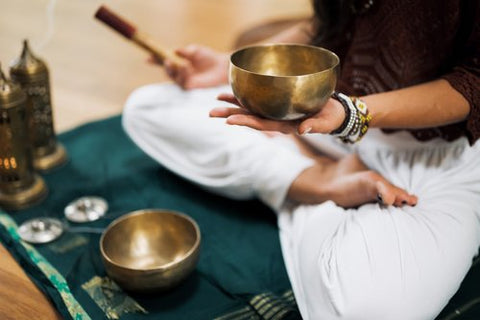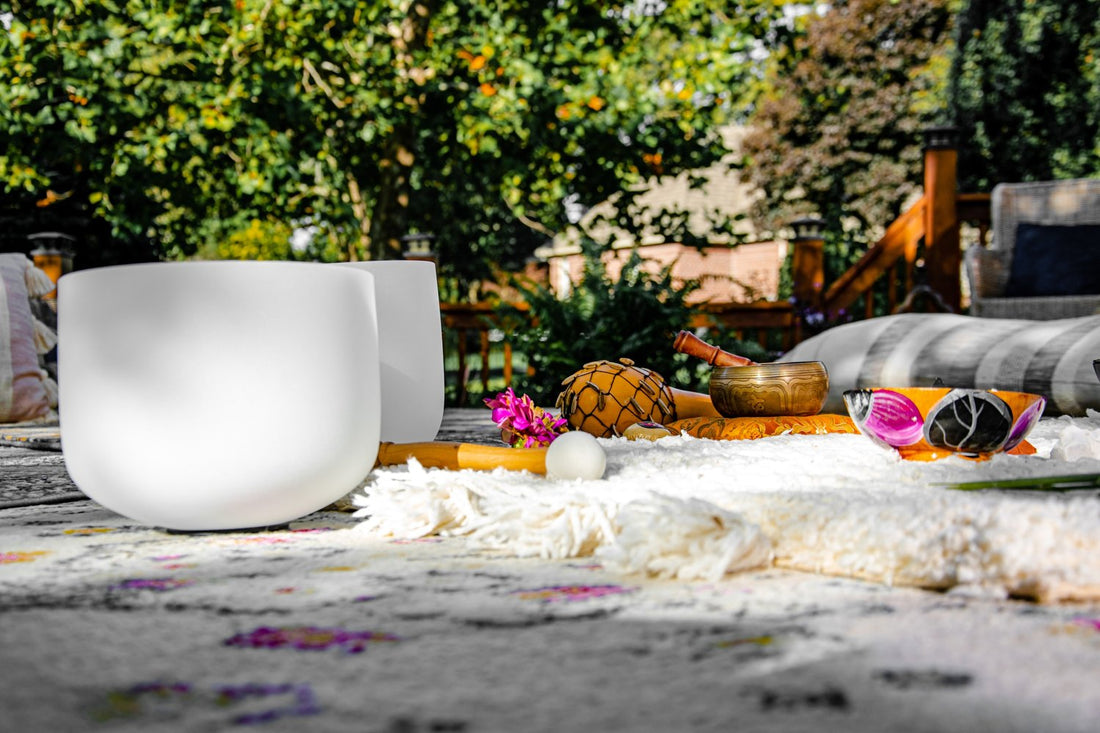Before we begin…
Before I begin this blog, I want to take a moment to acknowledge the importance of honoring and respecting cultures. It is with a grateful heart and a humble attitude that I present you with this information. I always want to do my best to educate and learn with you.
My intentions in this blog are to share about what I’ve learned through my research, and to open your eyes to the beautiful and rich history of sound healing. I am always learning, and I hope that the words in this blog are valued and appreciated.
I hope you enjoy learning too.
Now, let’s learn about sound healing together.
Sound is a larger part of our life than many of us realize.
This may be way some people are oblivious to the idea of sound healing—because they’re oblivious to how sounds impact them in general.
I want to encourage people to become more aware of what sound healing is and how it can benefit them, but also to honor and recognize the native roots of sound healing.

What is sound healing?
Healthline says, “Sound healing therapy uses aspects of music to improve physical and emotional health and well-being.”
It’s most often done by a trained practitioner.
Some people may be skeptical to sound healing because they feel like their guard goes up at the idea of something new. Sound healing is not a new concept. It’s a concept that originates in ancient times from Tibetan and Himalayan cultures. Though other sources say that sound healing originates from Australian Aboriginal culture. It’s possible that sound healing has been used in a variety of cultures throughout time. I believe that it’s important to acknowledge and learn more about the cultures that we glean ideas from, and be respectful to how their rich history impacts us today.
Just because sound healing may seem new to you, doesn’t mean you haven’t already been impacted by it.
Have you ever felt stressed and put on peaceful music? Have you ever used a white noise machine to calm you as you drifted to sleep? Have you ever felt like a song healed you? Just because you feel like sound healing is a newer concept doesn’t mean it is.
We know that ancient Tibetan and Himalayan cultures weren’t listening to ocean sounds on their Google home, so what is sound healing in a traditional sense?
This article explains it well, “Sound healers use Tibetan singing bowls, metal bowls that were once used in spiritual and healing ceremonies conducted by monks in Nepal and Tibet...The singing bowls produce a vibrational sound when tapped or rubbed with a wooden mallet.”
In ancient cultures, sound healing was used to combine sounds because when sounds combine, they organize “neural activity, stimulate bodies, and retune emotions, leading to calmness and productivity.”
You may find this sound healing YouTube video helpful to gain a better understanding of what sound healing can sound like.
What are the goals and benefits of sound healing?
In a sound healing session, you’ll likely see bowls, drums, tuning forks, gongs, or similar tools. These are used to create vibrations. The goal of sound healing is to reduce stress and pain. Through sound healing, people should find balance and alignment that enables them to feel their best.
Science around sound healing may be a bit limited because it’s a newer topic that researchers are studying, but there is still some valuable information that speaks to the benefits of sound healing. Research “found that music has anti-inflammatory properties and can strengthen the immune system while lowering stress levels. With less tension and anxiety, the body can maintain healthy cell activity and protect itself from illness.”
Sound healing as impacted people in different ways. Some people use it to meditate, while others use it to relieve pain and stress. Whatever the main goal is, it’s important to approach sound healing with an open mind, and to consult a doctor if physical pains don’t subside.

In the video I linked above, they list some of the benefits of sound healing as:
- Emotional Balance
- A Clear Mind with Increased Focus
- Feel Lighter in Your Body
- Deeper and Restful Sleep
- Stress Relief
- Harmony and Flow
- Deep Relaxation when other Meditation Techniques Fail
Let’s learn more about the history of sound healing.
As I mentioned above, some people link sound healing back to Aboriginals in Australia, while some people connect it back to Tibetan and Himalayan cultures. It’s fair to say that sound healing has been a part of cultures for longer than you or I have existed.
Sound healing is often linked to yogic cultures, but Tibetan monks have used sound healing as a form of meditation and healing as well.
Because of its wide variety of cultural backgrounds, and its openness for interpretation, sound healing is a beautiful art with rich history and powerful impacts. Different cultures and religions have used sound as a way to worship, meditate, and heal people.
Now, we get to combine what cultures have known for centuries, with new scientific studies, to benefit from the amazing power of sound.

My concluding thoughts.
Sound healing is going to have a different impact on everyone who tries it. There are a variety of ways that someone can benefit from sound healing, and what works for one person may not work for another person.
The biggest thing that I’ve found, is that it’s important to be open to learning more about sound healing and having an open mind that it could benefit you.
Sound healing is an opportunity to connect with yourself in a way that you may not have before. We’ve all been impacted by powerful lyrics, and enchanting ocean waves, but what happens when you open your mind to a new type of sound? There’s only one way to find out—try it.
If you’re interested in learning more about sound healing, and experiencing it for yourself. I invite you to join us at Rooted. This all-inclusive women’s retreat is a time focused on finding balance and learning how to sustain that balance in everyday life. On the retreat, we dive into sound healing, learn more about the history, and learn how to incorporate it into our lives.
I would love if you were able to join us at our next retreat. Learn more on my website.

